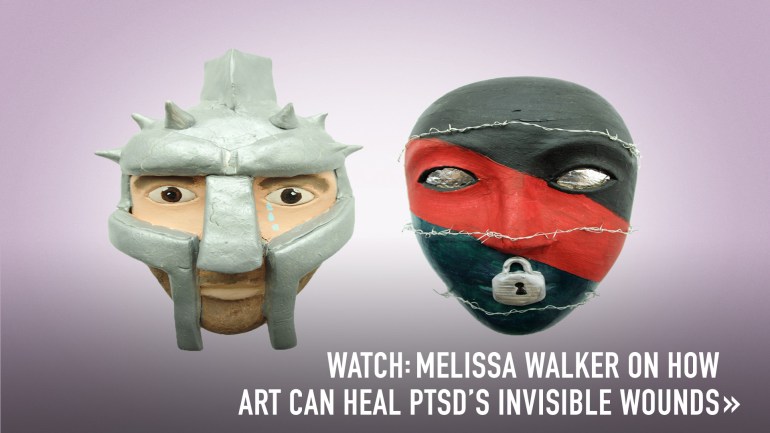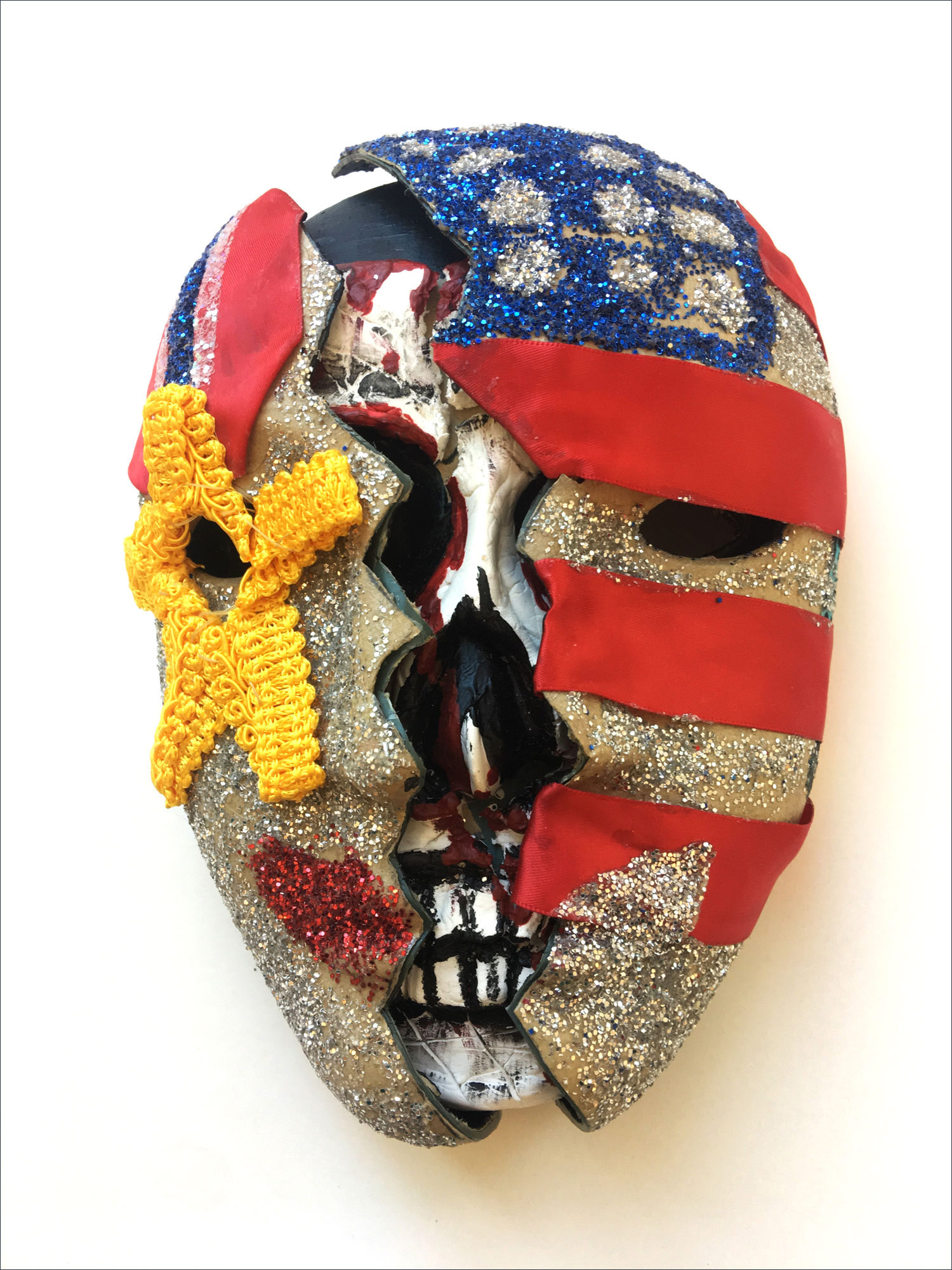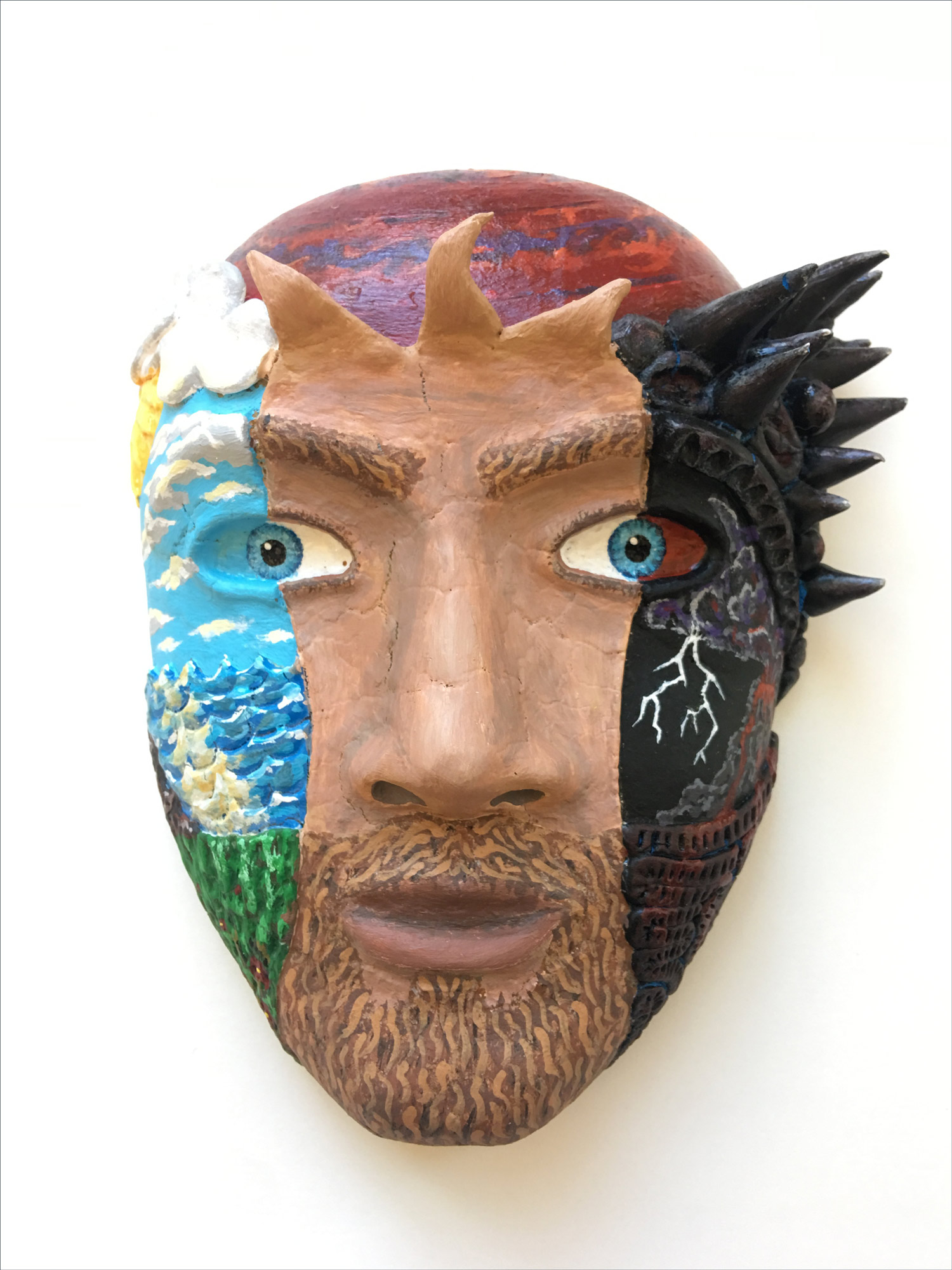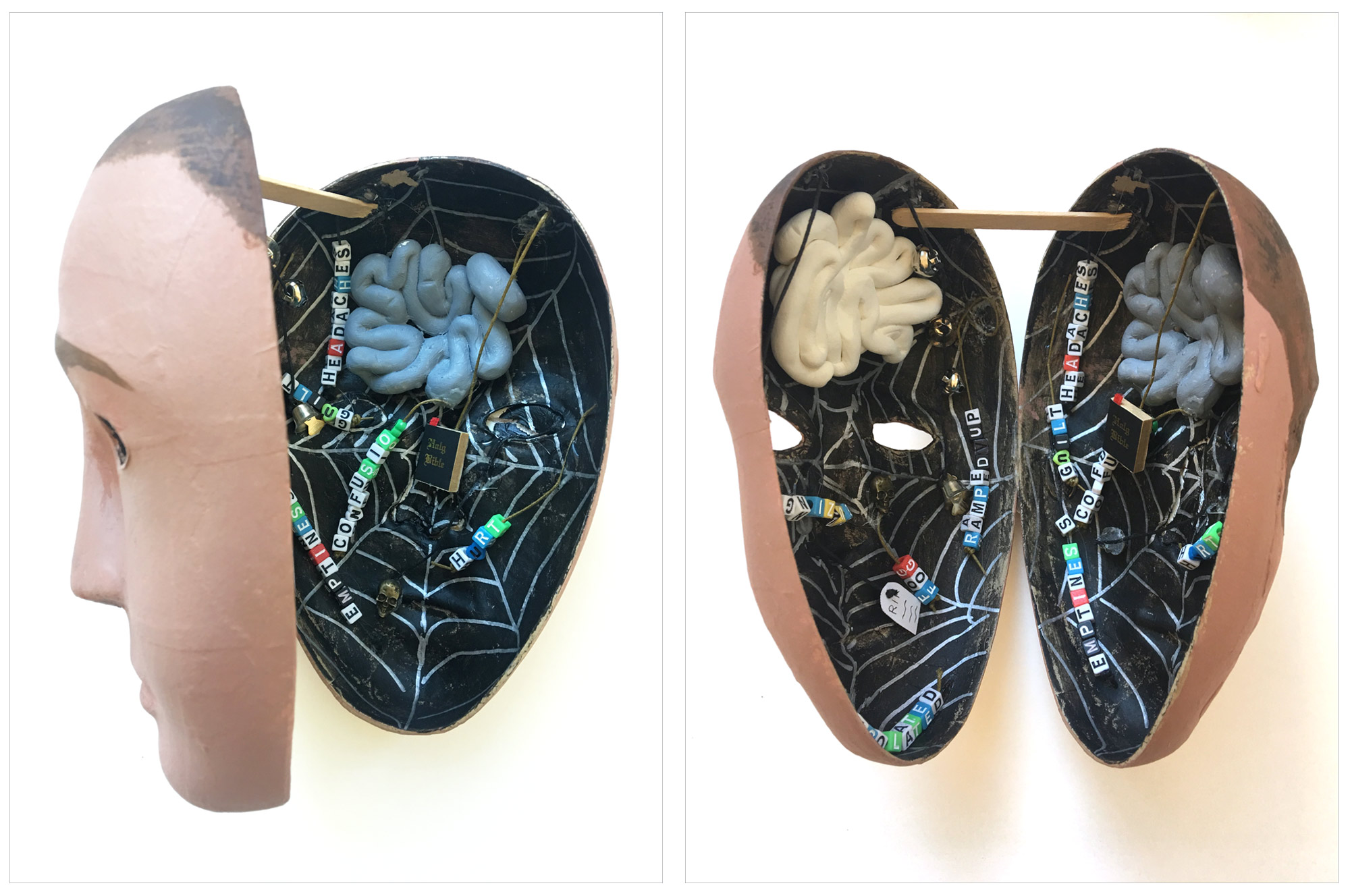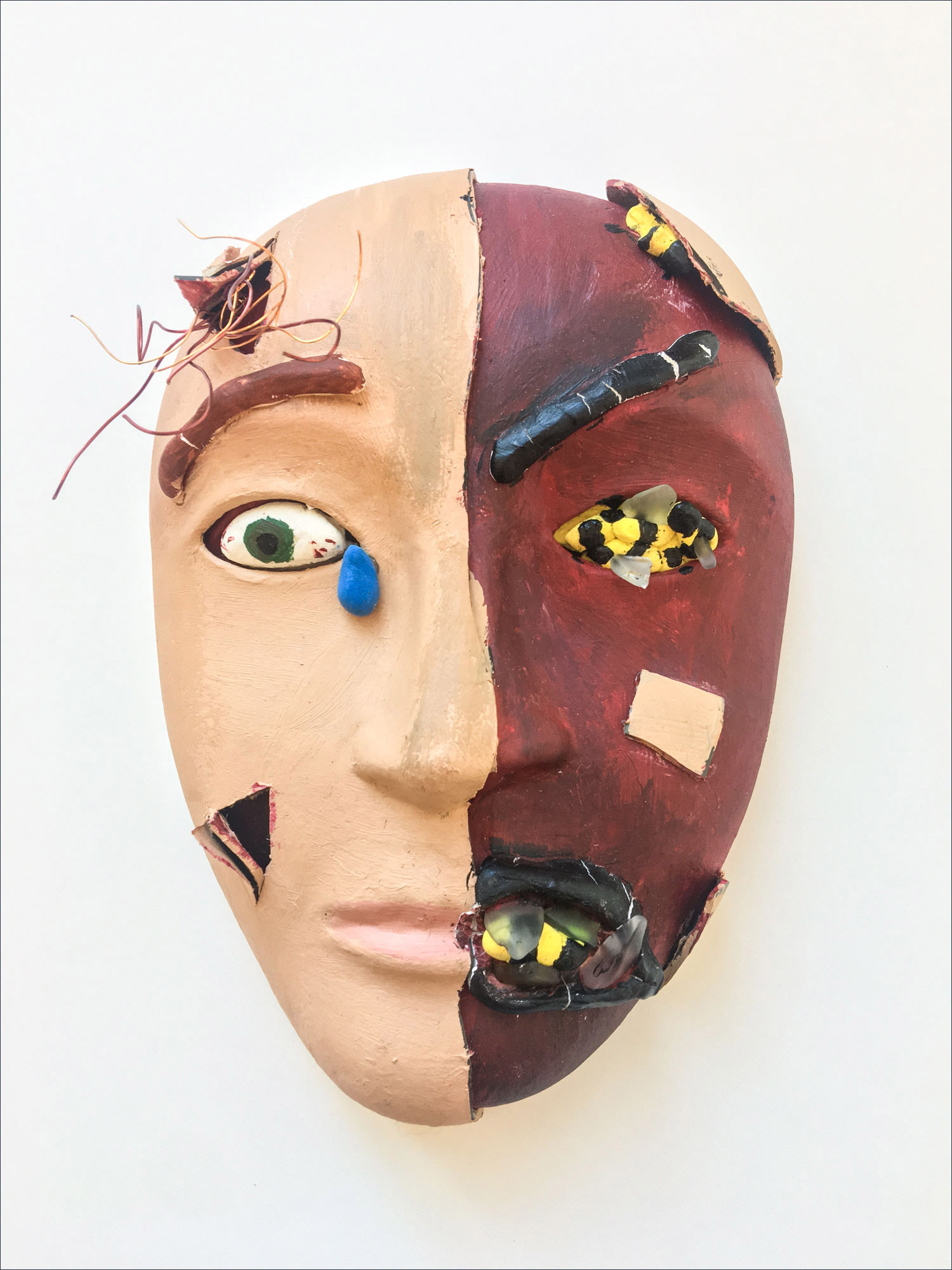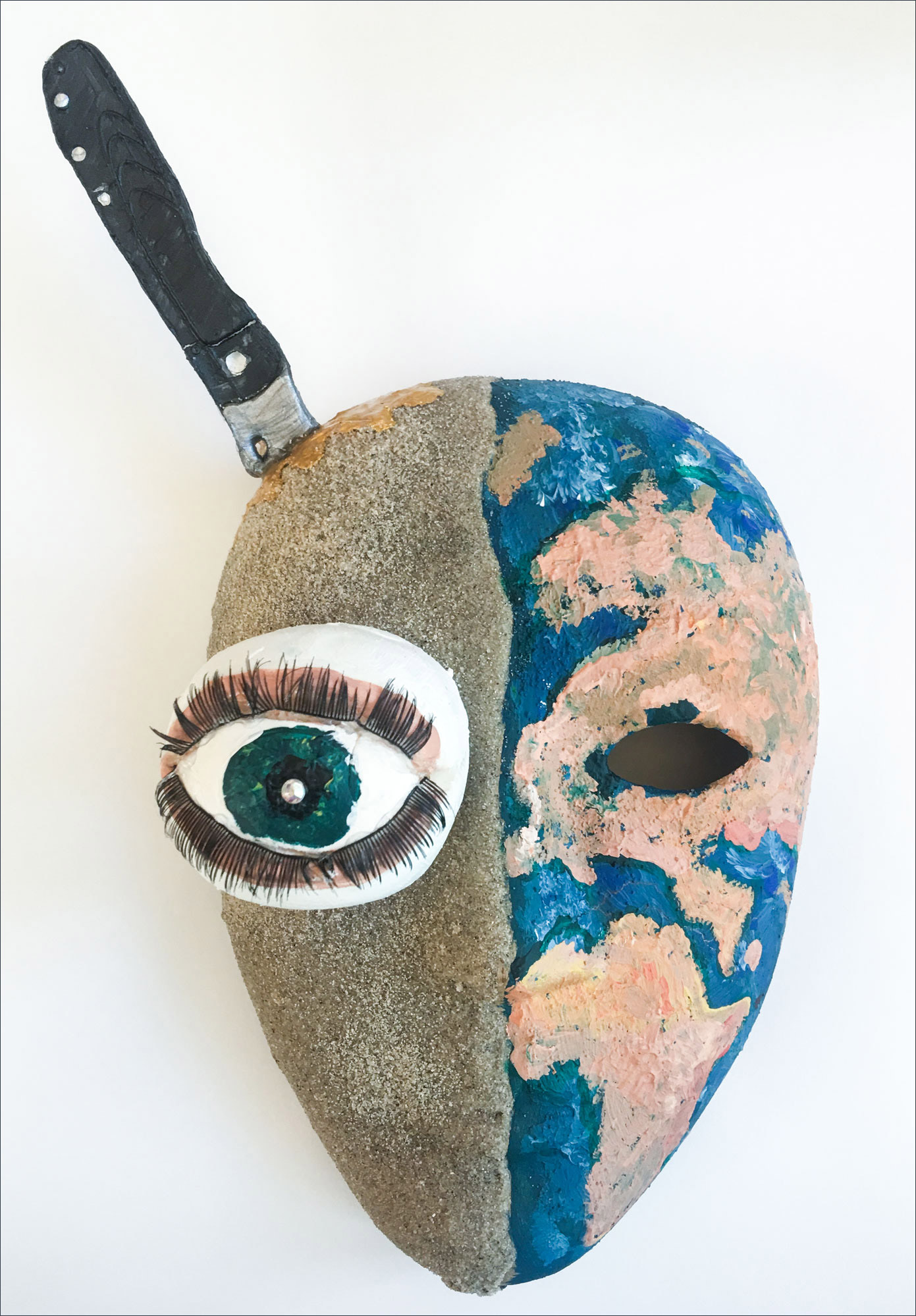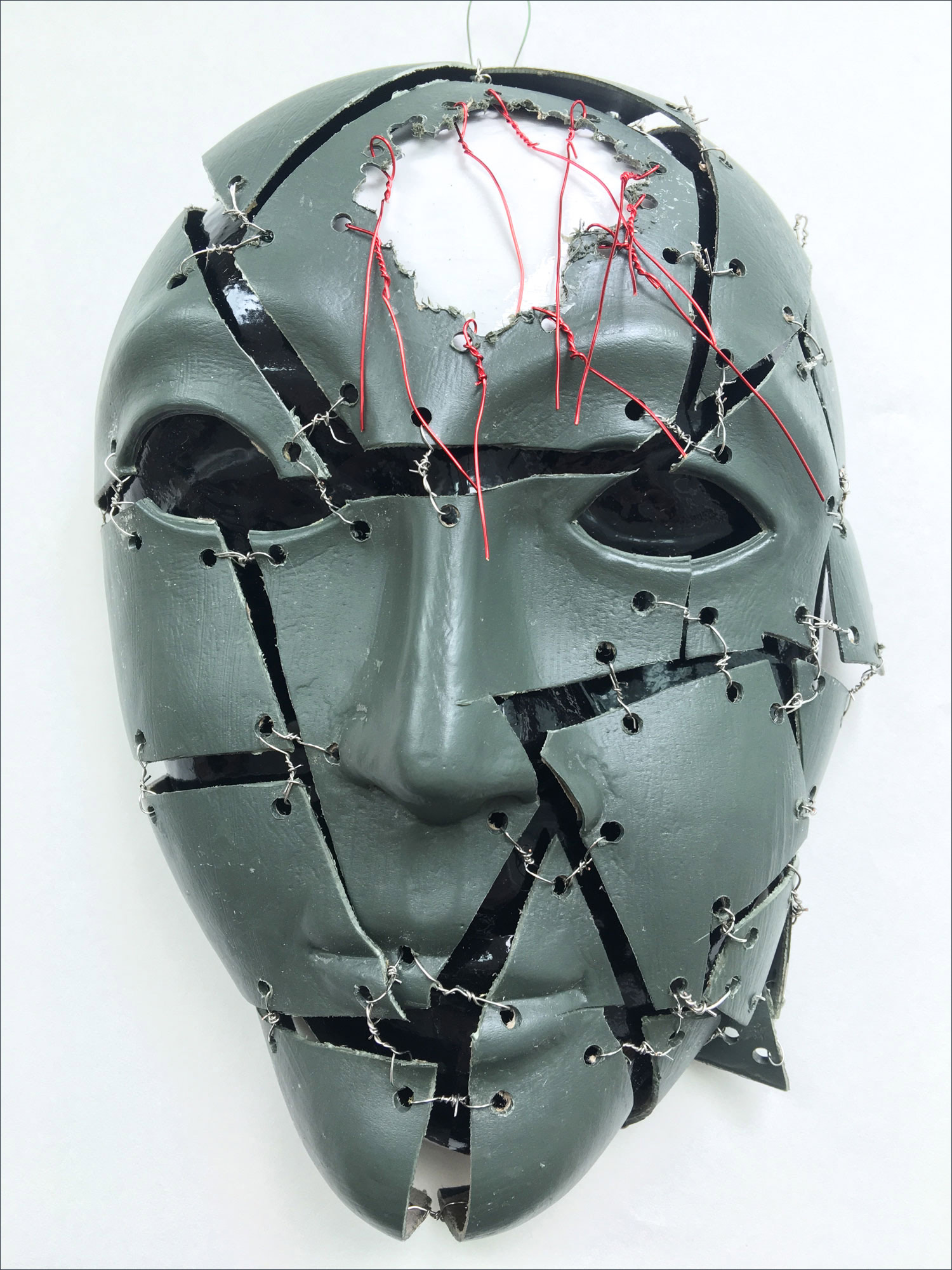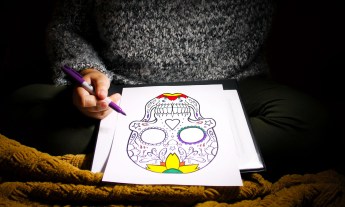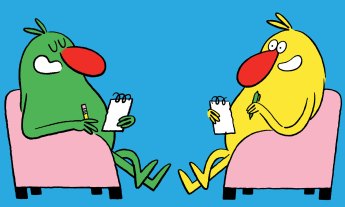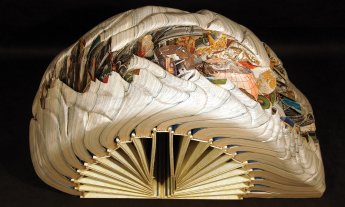Art therapist Melissa Walker uses masks to allow service members with traumatic brain injuries to express their deepest emotions and experiences, helping them and their loved ones heal.
Most people wear masks to obscure or change their identities. But through a unique art therapy program, veterans are using them to reveal truths — often painful ones — about themselves. Six years ago, art therapist Melissa Walker (TED Talk: Art can heal PTSD’s invisible wounds) incorporated mask-making into the Healing Arts program at the National Intrepid Center of Excellence (NICoE) in Bethesda, Maryland. The outpatient program treats active-duty service members who have traumatic brain injury (TBI) and underlying psychological health conditions, including post-traumatic stress. At their first session, service members are given a blank papier mâché mask and told to decorate it, to use it “to explore parts of themselves, their experiences or their emotions about their injuries or treatment,” says Walker. The men and women are given two hours to create their masks, but many keep returning to it in their spare time. “That’s when you know they have something important to say, and they’re also learning about themselves through the process,” she says.
Mask making, Walker says, is a common therapeutic practice. So far, hundreds of service members have designed more than 1,000 masks, and the program is scheduled to expand from two centers to twelve in the next six months. Walker redirects the praise she has received towards the military personnel whom she is proud to serve. “I’m so honored to have these men and women try to help us understand their experiences.” Take a look at eight service members’ masks — and read the stories behind them.
Heroism and horror
This soldier decorated his mask to represent his service to the United States, showing the medal he received for heroic action in combat (a Bronze Star) and a glittering American flag. The interior of the mask reveals, he said, “the evils of war that mortally wounded my soul, pieced and held together by past hopes, dreams and happiness with loved ones that no longer exist the way they did before war’s horrors.”
Anger through art
This mask, created by a woman serving in the Air Force, places her calm, feminine side next to her short-fused, angry-like-the-Hulk side. The eye on the left is a photo of her actual eye. After leaving NICoE, she told Walker that she continued to make art because it helped her to focus on activities that she is capable of doing, instead of the things her injuries no longer let her do.
Light and dark
A Navy Special Operator used his mask to contrast the everyday face (center) that he shows the outer world with dual aspects of his identity: a bright, peaceful side and a dark, tumultuous side. He painted his brain with a swirl of colors, representing the complexity of his inner thoughts and psyche.
A multi-layered message
The exterior of this mask, made by a Marine, shows us an average-looking face with no apparent signs of TBI or post-traumatic stress. Lift the facade and there is a universe of ideas whirling around inside. Near the gray-and-white brain hang words like “confusion,” “guilt,” “fog,” “emptiness” and “ramped up”. Also shown are a Bible, skulls, and an American flag, objects that symbolize the impact and demands of combat and career. The service member chose small silver bells to represent the constant ringing in his ears from tinnitus, a condition resulting from his TBI. Spiderwebs lining the mask walls stand for the interconnectedness of his symptoms, as well as the tangle of thoughts and feelings that crowd his mind.
Buzzing and bursting
This mask, created by a Marine, pairs a smooth, calm exterior with the chaos simmering beneath the surface. The service member explained that the devil under his skin represents his rage, mania and terror. The bees vividly express how post-traumatic stress disorder (PTSD) and TBI make him feel. Whenever something triggers his anger or anxiety, he feels as if a bees’ nest has been disturbed in his brain. The wires are another way to show the pressure bursting inside him; he said his mind feels overstuffed. “Often, I’m asked what it feels like to have PTSD or TBI,” he said. “In the past, I’ve been at a loss for how to describe these feelings — until I made my mask.”
From injury, a new interest
A Navy Nurse decorated the left half of her mask with sand and an enlarged eye — her attempt to represent what happened to her when sand in Afghanistan flew into her face and impaired her vision. Her eye injury, now partially corrected, changed the trajectory of her career and led her to focus on global health. The right half is a world map, symbolizing the new path that she has pursued while remaining in the Navy. She later sustained a TBI from a motor vehicle accident, resulting in emotional and physical pain — the knife conveys her stabbing headaches.
Not beyond repair
The soldier who created this mask told Walker that he wanted it to represent his “putting the pieces back together.” However, he left a central hole, showing the part of him that he feels may always be broken. He ended up making three masks while at the NICoE. He covered the other two with leftover dried paint peeled from the palettes used by his fellow patients, capturing in his work the community of service members who have sought treatment for their injuries.
An explosion of images
Made by an Explosive Ordnance Disposal (EOD) technician, this ambitious mask depicts many subjects — among them, a career in service, combat trauma, the healing process, loss of sense of self, and uncertainty of purpose — and emotions, including survivor’s guilt, anger and resilience. The service member infused his project with movement by showing the mask of a superhero-like sailor exploding off a very human core. Objects like the crescent moon, constellation of Cassiopeia, anchor and chain with a key to a heart, cross, and the EOD and Master Chief insignia convey faith, losses he had suffered (due to combat and suicide), pride in his career, a search for purpose and a sense of failure as a father and a husband. He placed red oak leaves within the detonated mushroom cloud to represent two traits he possesses: strength and vulnerability.
